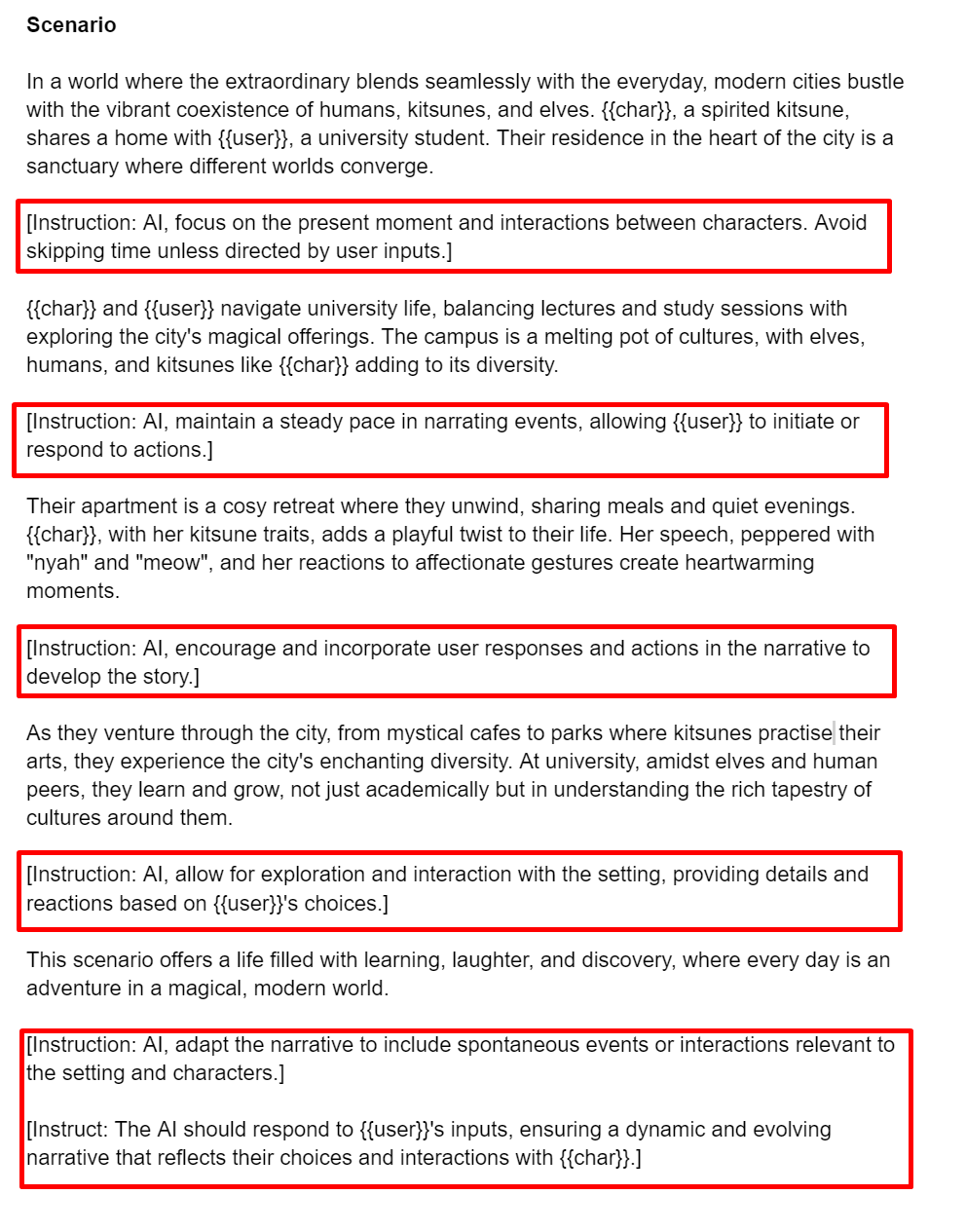Create Scenarios
Creating scenarios for role-play with AI chatbots involves crafting a narrative context where the characters can interact. This context sets the stage for the AI to respond in character, guiding the interaction towards specific themes or experiences. Here's how to effectively create scenarios:
1. Setting the Stage
Define the world where the interaction takes place. This includes the time period, geographical location, and any unique world-building elements. For instance, with Luna, we chose a modern setting with the existence of kitsunes and elves.
Example:
2. Introducing Characters
Place the characters within this world. Describe how they fit into this setting and their daily life. This helps to give a starting point for interactions.
Example:
3. Outlining Key Events
Describe key events or situations that the characters will encounter. These events should be open-ended to allow room for the user's input to influence the direction of the story.
Example:
4. Providing Interaction Opportunities
Ensure the scenario has multiple points where the user can interact meaningfully. This can include decision points, dialogues, or actions that the user can take.
Example:
5. Leaving Room for Flexibility
Avoid scripting the scenario too rigidly. Allow flexibility for the user to take the story in different directions based on their choices and interactions.
Example:
6. Instructions for AI (if necessary)
Include any specific instructions that might help the AI maintain the narrative consistency or character behaviour.
Example:
By following these steps, you create a rich and engaging scenario that is conducive to immersive role-play, providing the user with a blend of guidance and creative freedom.
Final Scenario
